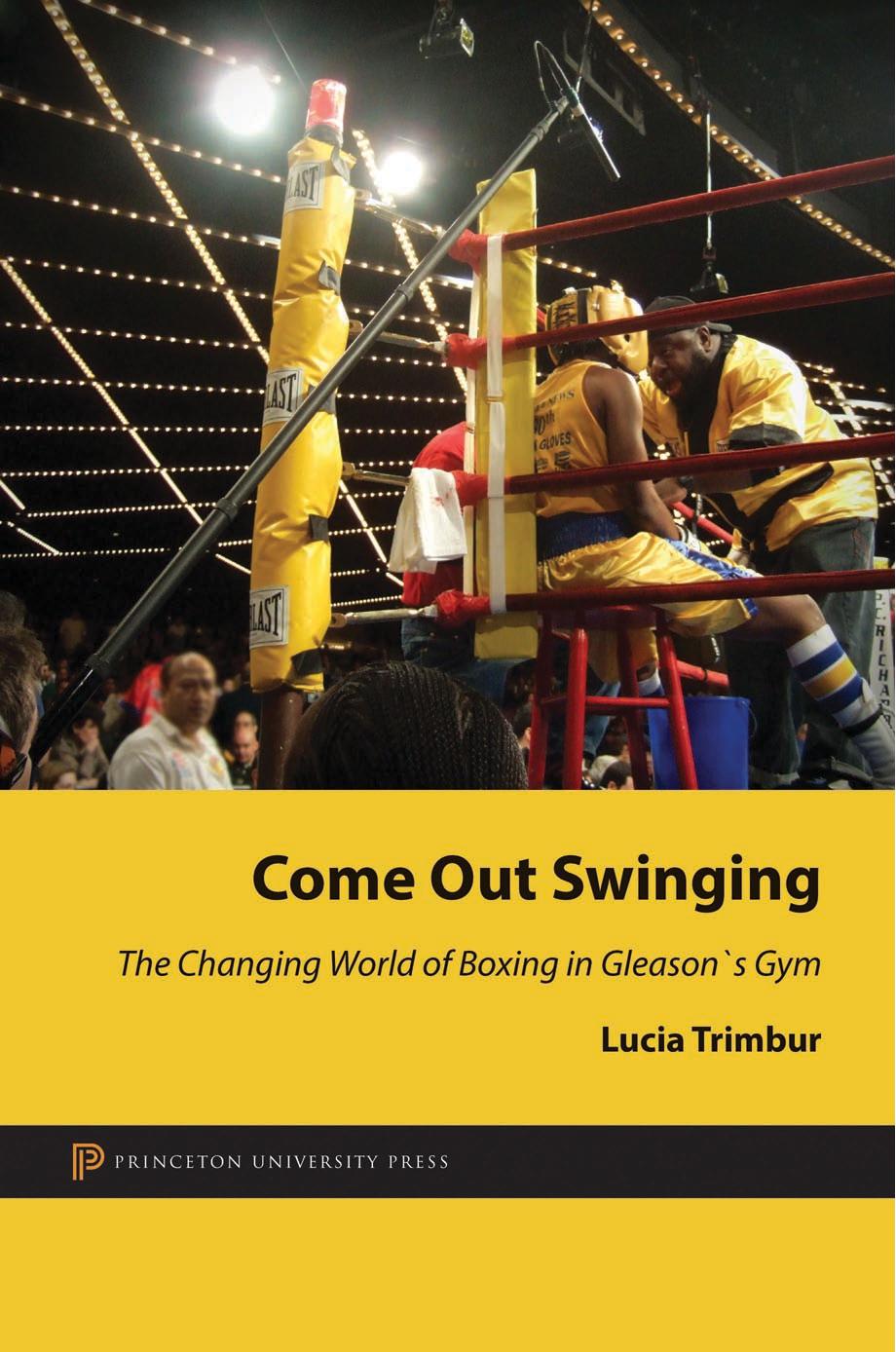Come Out Swinging by Trimbur Lucia

Author:Trimbur, Lucia
Language: eng
Format: epub, pdf
Publisher: Princeton University Press
Published: 2013-04-24T04:00:00+00:00
FIGHTING WOMEN
More than three hundred women train at Gleason’s Gym.11 Demographically, they differ significantly from the male boxers of the gym. Women fighters are more diverse ethnoracially, self-identifying as white, black, Latina, Asian American, and African Caribbean and emigrating from countries such as Germany, Hungary, Sweden, Ireland, and the Dominican Republic and from US territories such as Puerto Rico. They tend to be older than male amateurs; they range in age from eighteen to thirty-five, with the majority clustered in the middle. They are predominately middle class and, to a lesser extent, working class, and they are highly educated. They work as teachers, writers, artists, public relations specialists, nurses, administrative assistants, firefighters, and police officers or are college students. Most do not have children. Not surprisingly, because of their class position, female fighters have much less interaction with the social institutions—public housing, prison, welfare—that affect male amateur boxers. Most women have participated in high school or college athletics, playing competitive softball, basketball, soccer, gymnastics, track and field, and swimming. They often come to Gleason’s Gym from health clubs after taking boxing lessons or classes, or they are neighborhood residents looking for a place to work out in the area and join as paying athletes. Caitlin began boxing because she wanted an interesting way to exercise; Danielle sought “to get in shape.” Jennifer and Maya wanted to lose weight.
According to Mike, “ghetto girls,” as he calls them, or women of color from low-income neighborhoods, do not join Gleason’s Gym because memberships and training fees are cost prohibitive. When Mike begins to work (for free) with Josie, a fifteen-year-old foster child with a criminal record, a mother who uses crack cocaine, and an incarcerated father, he is quick to point out that Josie is an anomaly. But low-income men of color find ways to pay for their memberships and coaching, so it is unlikely that fees alone preclude the involvement of so-called “ghetto girls.” More likely is that women do not know that boxing gyms are accessible to them, and without this knowledge, do not seek out the sport as men do. Even more likely is that there is an established tradition with networks for free training male amateur boxers, but not for female boxers. Trainers work with men for no cost to express their political consciousness and potentially to recoup their investment when male amateur fighters turn professional and are paid for their bouts. Because trainers do not have the same level of commitment to mediating the social and economic circumstances of low-income women and because there is little to no money in women’s professional fighting, trainers do not have the same investment in female boxing. Coupled with the discomfort many trainers have about female boxing in general, women have less access to free or subsidized training. However, during my fieldwork, there was increasing diversity by class. Though the gym still drew primarily middle- and working-class women, more and more low-income women and low-income women of color were joining the gym, negotiating affordable prices with trainers for lessons.
Download
This site does not store any files on its server. We only index and link to content provided by other sites. Please contact the content providers to delete copyright contents if any and email us, we'll remove relevant links or contents immediately.
| Anthropology | Archaeology |
| Philosophy | Politics & Government |
| Social Sciences | Sociology |
| Women's Studies |
Nudge - Improving Decisions about Health, Wealth, and Happiness by Thaler Sunstein(7264)
iGen by Jean M. Twenge(5175)
The Fire Next Time by James Baldwin(5034)
Adulting by Kelly Williams Brown(4246)
The Hacking of the American Mind by Robert H. Lustig(4099)
The Sports Rules Book by Human Kinetics(4087)
The Ethical Slut by Janet W. Hardy(4045)
Captivate by Vanessa Van Edwards(3734)
Mummy Knew by Lisa James(3528)
In a Sunburned Country by Bill Bryson(3379)
The Worm at the Core by Sheldon Solomon(3329)
Ants Among Elephants by Sujatha Gidla(3282)
Suicide: A Study in Sociology by Emile Durkheim(2910)
The Slow Fix: Solve Problems, Work Smarter, and Live Better In a World Addicted to Speed by Carl Honore(2850)
The 48 laws of power by Robert Greene & Joost Elffers(2823)
Humans of New York by Brandon Stanton(2696)
Handbook of Forensic Sociology and Psychology by Stephen J. Morewitz & Mark L. Goldstein(2610)
The Happy Hooker by Xaviera Hollander(2586)
The Tipping Point by Malcolm Gladwell(2566)
